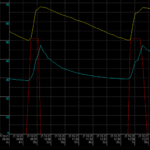New future challenges for DHC entail new finance solutions.
 The district heating and cooling sector are in full evolution towards decarbonisation alongside an increasing share of renewable sources. This scenario entails new challenges above all from the point of view of the market. From a publicly-owned DHC sector to new private-public partnerships and cooperative models, the future of district heating and cooling gives room to innovative financing schemes and business models able to deal with the need for an increased leverage of private or alternative funding.
The district heating and cooling sector are in full evolution towards decarbonisation alongside an increasing share of renewable sources. This scenario entails new challenges above all from the point of view of the market. From a publicly-owned DHC sector to new private-public partnerships and cooperative models, the future of district heating and cooling gives room to innovative financing schemes and business models able to deal with the need for an increased leverage of private or alternative funding.
Infrastructure project financing is harder in an even more limited public spending framework. Moreover, competition from gas and increasing energy efficiency measures which reduce heat demand, require finding the right investors. For all these reasons, it is time to look for new opportunities of stakeholders’ participation and cooperation. The solution is often represented by a greater engagement of end-users. Customers shouldn’t be considered anymore just as a simple demand-side variable but also as a community capable of creating sustainable business cases for district heating development.
The right answer to all this could be crowdfunding. Crowdfunding is a form of alternative finance, which allows to fund a project or venture by raising small amounts of money from a large number of people, via web-based platforms. In the framework of an increasing lack of financing, crowdfunding can have a major role in adding new sources of finance, raising capital from diffused investors. The latter could accept a lower and a long term ROI in exchange of tangible social and environmental benefits (the so-called positive externalities in a more economic jargon).
There are different crowdfunding models that could be used in the district heating sector but the financial ones appear to be the most suitable. Specifically, equity/community shares could ease the access to equity capital for private, public/private partnership initiatives and cooperatives, even though the “lending crowdfunding model” seems to be adaptable to almost all district heating business models. Yet, the unique non-financial crowdfunding model is represented by civic campaigns managed and sponsored by the public sector. This last option underlines the growing engagement that cities and urban districts is expected to have in the future of financing for DHC.
The involvement of cities, local authorities, urban and regional networks is tightly linked to this matter. The key for the use of crowdfunding in energy projects (in particular district heating and cooling) is access to finance and public engagement. It is an innovative instrument with a double function: the ability to support the institutional sources of finance and act as a participation and communication booster. Crowdfunding platforms have the strength to engage citizens, maximise the impact of new projects and raise the local stakeholders’ awareness and at the same time redistributing more equally royalties and revenues.
Developed as Deliverable D6.4 this study was conducted by Dr Chiara Candelise, a PhD qualified energy economist and policy specialist. She is a researcher at Bocconi University (Italy) and Imperial College London (UK) as well as founder and CEO of Ecomill s.r.l., an Italian equity crowdfunding platform dedicated to the energy sector.



